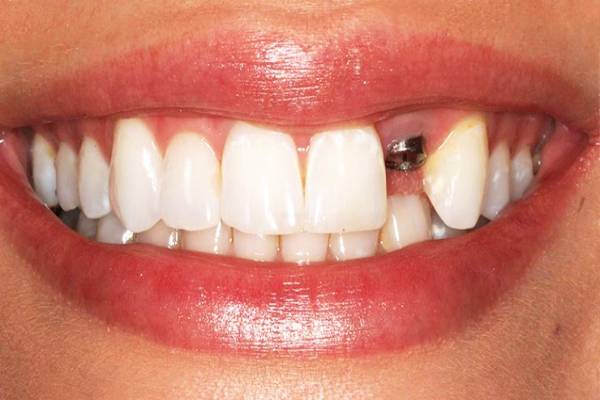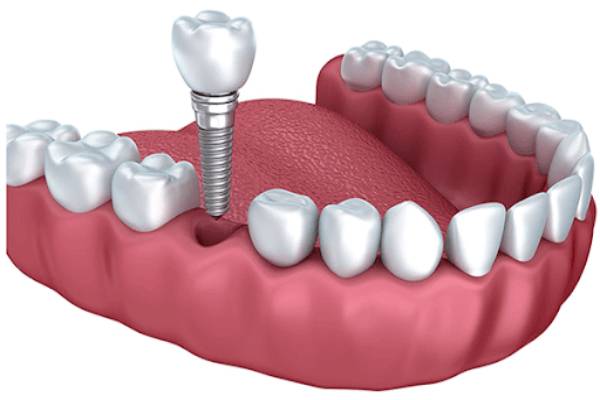Table of Contents
Dental implants are artificial structures placed into the jawbone of an applicant by an oral surgeon. Those who have lost one or more teeth may need to undergo dental implant surgery. The oral surgeon places the implant into the jaw using a screw-like device. The implant functions as an anchor for an artificial tooth. A device called “an abutment” connects the artificial tooth to the dental implant. The Crown of an artificial tooth is custom-made to fit the mouth and match the color of other teeth, and function like natural teeth. Dentures or implants can be a good option for restoring lost teeth. Implants may have several advantages overdentures. In this article from the Moj Aramesh Amitis Health Tourism Company, dental implant procedures will be fully discussed.
Dental Implants Vs Dentures
Some advantages implants may have overdentures are:
• They feel and look more natural
• Have a higher success rate
• Improve chewing function
• Lead to a lower risk of cavities developing in nearby teeth
• Lead to better protection of jawbone at the site of lost tooth
• Lead to decreased sensitivity of nearby teeth
• Don’t need removal or daily cleaning (of course oral hygiene must be observed)
Despite all these advantages, dental implant surgery may not be suitable for everyone. Dental implants must be boned to the jaw, therefore, the applicant’s jaw condition must be examined by a dentist before the surgery.

Are you an ideal candidate for dental implant surgery?
In this article from The Moj Aramesh Amitis Health Tourism Company, we will discuss procedures of dental implant surgery. Also, at the end of this article, you can decide whether this surgery is best for you or not. Of course, the final decision must be taken by your dentist or oral surgeon.
What to expect from dental implantation surgery?
Dental implant surgery is usually an outpatient surgery performed in different stages with different healing times. The process of placing a dental implant involves multiple steps, including:
1. Removing damaged tooth
2. Preparing jawbone (for grafting) if necessary
3. Implanting the prosthesis
4. Healing and growth of the bone
5. Placing the abutment(s)
6. Placing artificial tooth
Factors influencing the performance of several stages of dental implant surgery in one step
The entire process of the surgery may take months from start to finish. Much of that time is dedicated to the jawbone to grow and heal. In some cases, certain steps can be combined, including:
• Condition of gums and jawbone of the applicant
• Specific surgical method
• Specific materials used
Damage Tooth RemovalFirst, the damaged tooth must be removed completely, roots and all. After healing of removal site, a specialist will perform the next stages of implantation.
1. Jawbone Preparation (Grafting), if Necessary
If your jawbone is too soft or too thin, bone grafting may be required before the surgery. Serious complications may occur if the implant is not supported by the jawbone, since powerful chewing action exerts great pressure on the jawbone. Jawbone grafting can create a more solid base for the implant. Several bone graft materials can be used to reconstruct jawbone, including natural bone graft (using a bone from other parts of your body), or synthetic bone graft (using bone-substitute materials). Using these methods can create a supportive structure for new bone growth. Counsel your dentist (if necessary) for choosing the best option available for jawbone grafting. Keep in mind that it may take several months for the graft to bond enough (to support the implants in the gums and bone) with the jawbone. In some cases, you may need only minor bone grafting which can be done at the same time as the implant surgery. The condition of your jawbone determines how you proceed.
2. Dental Implant Surgery
During the surgery, the surgeon makes an incision in your jawbone to open the gum and expose the jawbone. Next, Holes are drilled into the bone where the dental implant metal post will be placed. Since the metal implant serves as the root of the tooth, it is grafted deep in the bone. Since only the implant base is grafted into the jawbone, after this stage, your missing tooth’s gap is visible. If necessary, the dentist can use a type of partial or temporary denture to enhance your look, which can be removed while sleeping or whenever you want to clean them.
3. Bone Growth & Healing
Once the metal implant post is placed in your jawbone, osseointegration begins. At this stage, the jawbone grows and unites with the surface of the dental implant. This procedure, which can take several months, helps to create a supportive base for the new implant, making it function like a natural tooth root.
4. Placing The Abutment
When osseointegration is complete, additional surgery may be required to place the abutment, i.e. placing a piece in the implant site which the tooth crown is eventually detached. This minor surgery is done in an outpatient setting and via local anesthesia.
To place the abutment:
· First, the surgeon reopens the gum to expose the implants.
· Next, the abutment is attached to implants.
· Finally, the gum tissue is closed around the abutment.
Sometimes, the abutment is attached to the metal post of the implant, meaning that no extra surgical step is needed. Since the abutment is just past the gum line, it is visible when you open your mouth and will be that way till the implantation is complete. Some people are not satisfied with this and prefer to undergo another surgery for this step. After this step, the abutment will be visible for a shorter period. It will take about two weeks for your gums to heal after the abutment is placed.
5. Artificial Tooth Placement
When your damaged gums heal (from the loss of one or more teeth), you can see more closely the appearance of your remaining teeth. This means that you will have to wait for your gums to improve before performing dental implant surgery. Achieving a good condition and improving your gums is effective in making a suitable denture for you. If your jawbone is not strong enough to support new teeth and dental implants, dental implant surgery will be postponed. As mentioned above, bone grafts can be used to improve the condition of the jawbone and increase its strength.
Types of Dentures Used in Dental Implant Surgery
You and your dental specialist can choose artificial teeth that are removable, fixed, or a combination of both:
· Removable.
This type is similar to a conventional removable denture and can be a partial or full denture. It contains artificial white teeth surrounded by pink plastic gum. It’s mounted on a metal frame that’s attached to the implant abutment, and it snaps securely into place. It can be easily removed for repair or daily cleaning.
· Fixed.
In this type, an artificial tooth is permanently screwed or cemented onto an individual implant abutment. You can’t remove the tooth for cleaning or during sleep. Most of the time, each crown is attached to its dental implant. However, because implants are exceptionally strong, several teeth can be replaced by one implant if they’re bridged together.

Dental Implant Surgery in Iran
Moj Aramesh Amitis Health Tourism Company, as the first company succeeded in obtaining a health tourism license from the Ministry of Health and Education of Iran, has considered various medical services for a wide range of international applicants visiting Iran for different surgeries. In the health tourism industry, international patients travel abroad with aim of applying for medical or cosmetic treatments, such as dental implant surgery. Due to the existence of skilled doctors, well-equipped medical centers, and low treatment costs, Iran is one of the most reputable health tourism hubs./ Dental Implant Surgery in Iran
Author: Sh. Khazaei
Translator: N. Rahimifar




